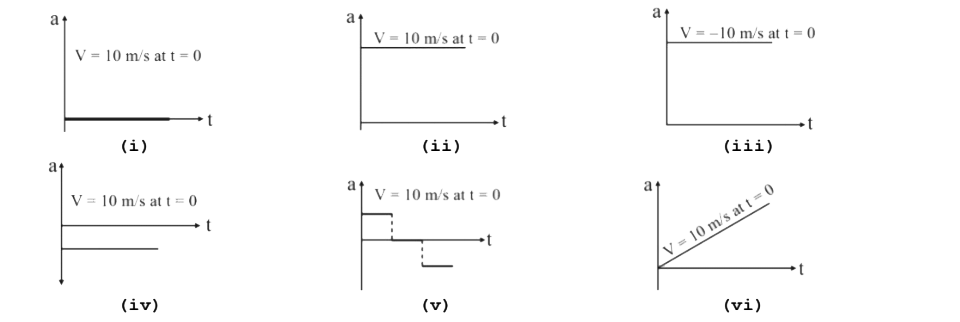Schrodinger wave equation for a particle in a one-dimension box is
δ2Ψδx2+2mh(E+∞)Ψ=0
δ2Ψδx2+8π2mh2(E−V)=0
δ2Ψδx2+2mh(E−V)Ψ=0
δ2Ψδx2+8π2mh2(E−∞)=0
To derive the Schrödinger wave equation for a particle in a one-dimensional box, we can follow these steps:
Step 1: Understand the Concept of a Particle in a Box
A particle in a one-dimensional box is a fundamental concept in quantum mechanics. It refers to a particle that is confined to move within a certain region of space, typically between two walls, where the potential energy outside this region is considered infinite.
Step 2: Write the Time-Independent Schrödinger Equation
The time-independent Schrödinger equation for a particle in one dimension is given by:
−ℏ22md2ψdx2+V(x)ψ=Eψ
Where:
- ℏ is the reduced Planck's constant,
- m is the mass of the particle,
- ψ is the wave function,
- V(x) is the potential energy,
- E is the total energy of the particle.
Step 3: Define the Potential Energy for the Box
For a particle in a one-dimensional box of length L, the potential energy V(x) is defined as:
- V(x)=0 for 0<x<L (inside the box),
- V(x)=∞ for x≤0 and x≥L (outside the box).
Step 4: Substitute the Potential into the Schrödinger Equation
Since V(x)=0 inside the box, the Schrödinger equation simplifies to:
−ℏ22md2ψdx2=Eψ
Rearranging gives:
d2ψdx2+2mEℏ2ψ=0
Step 5: Introduce Constants
Let k2=2mEℏ2. Thus, we can rewrite the equation as:
d2ψdx2+k2ψ=0
Step 6: Solve the Differential Equation
The general solution to this equation is:
ψ(x)=Asin(kx)+Bcos(kx)
Where A and B are constants determined by boundary conditions.
Step 7: Apply Boundary Conditions
The boundary conditions for a particle in a box are:
- ψ(0)=0 (the wave function must be zero at the walls),
- ψ(L)=0.
Applying ψ(0)=0 gives B=0. Thus, the wave function simplifies to:
ψ(x)=Asin(kx)
Applying ψ(L)=0 gives:
Asin(kL)=0
This implies that kL=nπ where n is a positive integer.
Step 8: Finalize the Wave Function
Thus, we have:
k=nπL
Substituting back for E:
E=ℏ2k22m=n2π2ℏ22mL2
Conclusion
The final form of the Schrödinger wave equation for a particle in a one-dimensional box is:
d2ψdx2+8π2mℏ2(E−V)ψ=0
This corresponds to the equation:
d2ψdx2+8π2mℏ2(E−V)ψ=0
A particle in a one-dimensional box is a fundamental concept in quantum mechanics. It refers to a particle that is confined to move within a certain region of space, typically between two walls, where the potential energy outside this region is considered infinite.
The time-independent Schrödinger equation for a particle in one dimension is given by:
- ℏ is the reduced Planck's constant,
- m is the mass of the particle,
- ψ is the wave function,
- V(x) is the potential energy,
- E is the total energy of the particle.
For a particle in a one-dimensional box of length L, the potential energy V(x) is defined as:
- V(x)=0 for 0<x<L (inside the box),
- V(x)=∞ for x≤0 and x≥L (outside the box).
Since V(x)=0 inside the box, the Schrödinger equation simplifies to:
Let k2=2mEℏ2. Thus, we can rewrite the equation as:
The general solution to this equation is:
The boundary conditions for a particle in a box are:
- ψ(0)=0 (the wave function must be zero at the walls),
- ψ(L)=0.
Thus, we have:
The final form of the Schrödinger wave equation for a particle in a one-dimensional box is:
Topper's Solved these Questions
- STRUCTURE OF ATOMBOOK - DINESH PUBLICATIONCHAPTER - STRUCTURE OF ATOMEXERCISE - Comprehension Linked MCQs
42 Videos
- STRUCTURE OF ATOMBOOK - DINESH PUBLICATIONCHAPTER - STRUCTURE OF ATOMEXERCISE - Assertion-Reason Type Questions
16 Videos
- STRUCTURE OF ATOMBOOK - DINESH PUBLICATIONCHAPTER - STRUCTURE OF ATOMEXERCISE - Competitive Examinations
42 Videos
- STATES OF MATTER : GASES AND LIQUIDSBOOK - DINESH PUBLICATIONCHAPTER - STATES OF MATTER : GASES AND LIQUIDSEXERCISE - Statement Type Question
5 Videos
- SURFACE CHEMISTRYBOOK - DINESH PUBLICATIONCHAPTER - SURFACE CHEMISTRYEXERCISE - Ultimate Prepatarory Package
16 Videos
Similar Questions
Knowledge Check
In the Schrodinger equation, H is
Aa mathematical operator called HamiltonianBconstructed by Schrodinger from the expression for the total energy of the systemCBoth (1) and (2)DNeither (1) nor (2) trueIn the Schrodinger's wave equation Ψ represents
AorbitBwave functionCwaveDradial probabilityIn the Schrodingers wave equation sπ repressents
AOrbitBWave functionCWaveDRadial probability
On solving Schrodinger wave equation for hydrogen atom, the values of the enery obtained are called......and the corresponding values of the wavefunction (Ψ) are called.......
View SolutionDraw the v-t graphs for the given a-t graphs for a particle moving in one dimension.

View SolutionFind the particular solution of the time dependet Schrodinger equation for a freely moving particle of mass m.
View SolutionThe correct Schrodingers's wave equation for an electron with e as tatal energy and V as potential energy is :
View SolutionThe Schrodinger equation for a free electron of mass m and energy W written in terms of the wave function Ψ is d1Ψdx2+8π2mEh2Ψ=0. The dimensions of the coefficient of Ψ in the second term must be
View Solution
